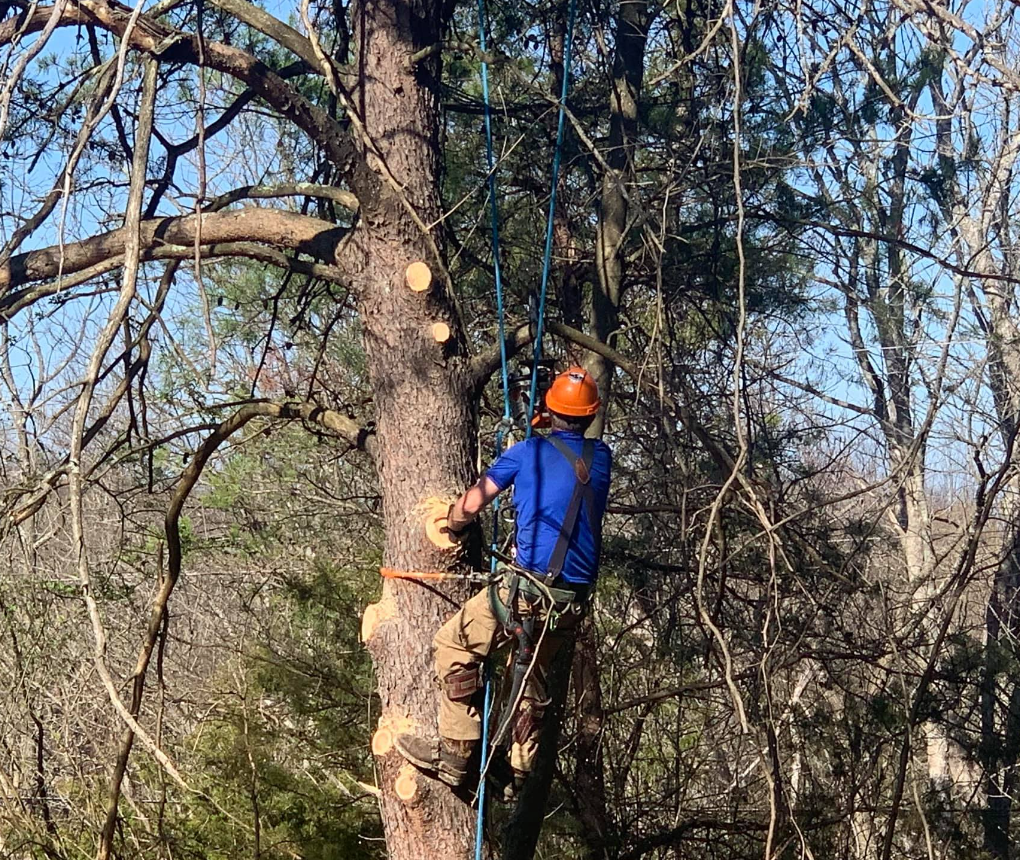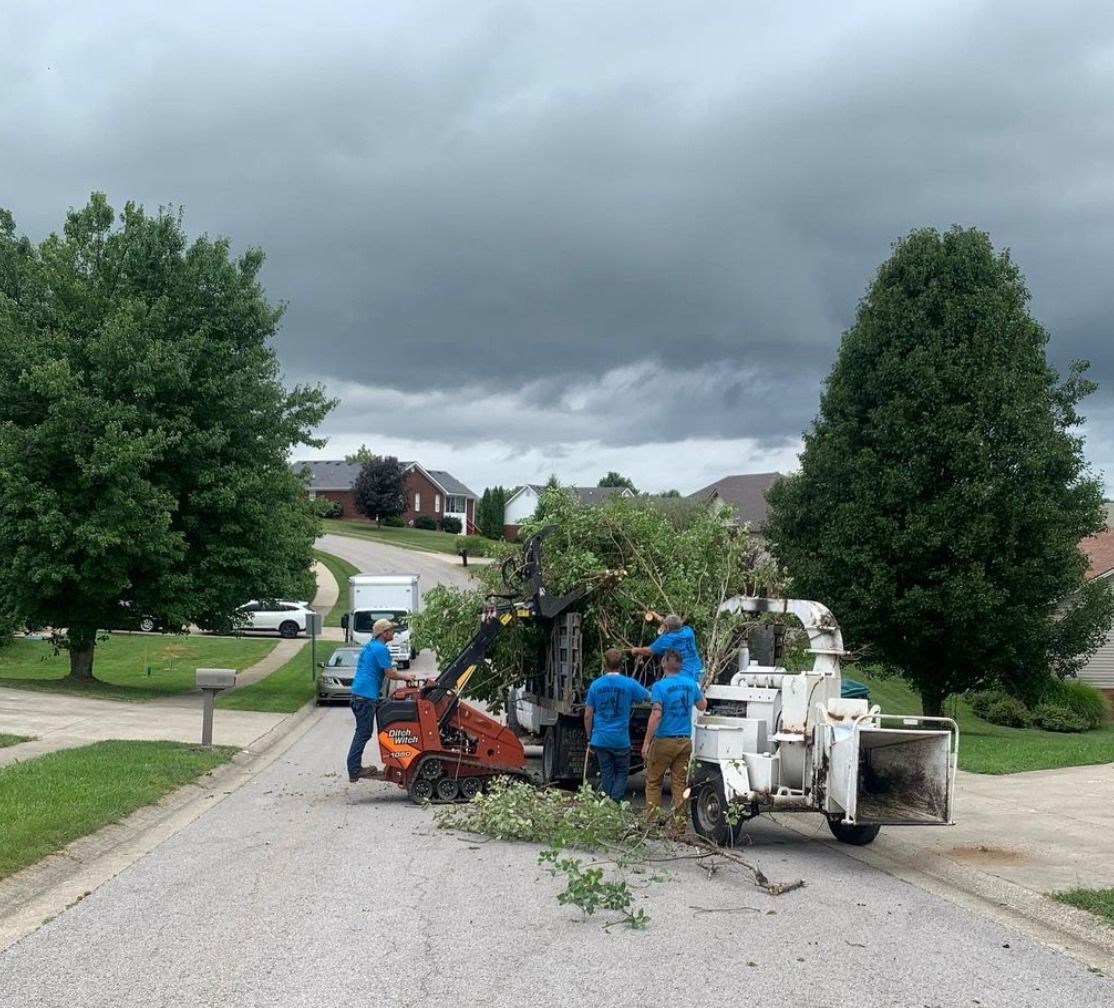Blog

Trees are not only beautiful additions to our landscapes but also essential for the environment. However, there are times when tree removal becomes necessary for safety, health, or aesthetic reasons. In this comprehensive guide, we'll explore the key signs indicating that it's time to remove a tree from your property. From structural issues to disease infestation, understanding these signs can help you make informed decisions to protect your property and ensure the safety of your family. Structural Instability One of the most critical indicators that a tree may need to be removed is structural instability. Signs of structural issues include leaning at an abnormal angle, large cracks in the trunk or major branches, and visible root damage. These issues compromise the stability of the tree, increasing the risk of it falling and causing property damage or injury. Dead or Diseased Tree Dead or diseased trees pose significant risks to both property and people. Dead trees are structurally weak and can easily fall during storms or high winds. Diseased trees, on the other hand, may spread pathogens to nearby trees or pose a hazard if branches begin to decay and fall. If a tree shows signs of extensive disease or decay, it's crucial to consider removal to prevent further spread and ensure the safety of your property. Pest Infestation Pest infestations can weaken trees and compromise their health and structural integrity. Common pests such as emerald ash borers, pine beetles, and tent caterpillars can cause significant damage if left unchecked. Signs of pest infestation include visible holes in the trunk, dieback of branches, and sawdust-like material at the base of the tree. Obstruction or Overcrowding Trees that obstruct views, interfere with power lines, or crowd other trees and structures may need to be removed to alleviate these issues. Overcrowded trees compete for sunlight, water, and nutrients, leading to stunted growth and increased susceptibility to disease and pests. Assess the overall impact of the tree on your property and consider removal if it poses significant obstruction or overcrowding issues. Root Damage Root damage can have far-reaching effects on the health and stability of a tree. Compacted soil, construction activities, and invasive roots from nearby trees can all cause root damage. Signs of root damage include reduced leaf size, premature leaf drop, and leaning or instability. In severe cases, root damage may compromise the tree's ability to absorb water and nutrients, leading to decline and eventual death. Knowing when it's time to remove a tree is essential for maintaining a safe and healthy environment on your property. By recognizing the signs of structural instability, disease, pest infestation, obstruction, overcrowding, and root damage, you can make informed decisions to protect your property and ensure the safety of your family. If you're unsure whether a tree should be removed, consult with a professional arborist for expert advice and guidance. For expert tree removal services and professional guidance, contact Morton's Tree Care today. Our team of professionals have the expertise and experience to assess your trees and recommend the best course of action for your property. Don't wait until it's too late—schedule your consultation now and take proactive steps to protect your property and loved ones.

As the chill of winter begins to fade and signs of spring emerge, it's time to prepare your trees for the vibrant season ahead. Proper tree care during the spring sets the stage for healthy growth, lush foliage, and stunning blooms throughout the year. In this comprehensive guide, we'll explore essential tree care tips to ensure your trees thrive this spring and beyond. Let's dive in! Pruning for Health and Growth: Spring is an ideal time to assess your trees' structure and prune as needed to remove dead, diseased, or crossing branches. Pruning not only enhances the aesthetic appeal of your trees but also promotes airflow and sunlight penetration, reducing the risk of disease and pest infestation. Use sharp, clean tools to make precise cuts, and remember to prune according to the specific needs of each tree species. Regular pruning fosters healthy growth and strengthens the overall structure of your trees. Tree Removals: Assessing and Addressing Hazardous Trees: While we cherish the beauty and benefits of trees, sometimes removal is necessary for safety reasons. As spring storms approach, it's crucial to identify and address any hazardous trees on your property. Look for signs of instability, such as leaning, cracking, or hollowed trunks, and consult with a professional tree care service if you have concerns. Prompt tree removals can prevent property damage, injury, and costly repairs, ensuring the safety of your family and surroundings. Soil Health and Nutrient Management: Healthy soil is the foundation for thriving trees. Conduct a soil test to assess nutrient levels and pH balance, and amend the soil as needed to provide optimal growing conditions for your trees. Mulching is another essential practice to conserve moisture, suppress weeds, and improve soil structure. Apply a layer of organic mulch around the base of your trees, avoiding direct contact with the trunk, to retain moisture and regulate soil temperature. Regularly replenish mulch to maintain its effectiveness throughout the growing season. Pest and Disease Prevention: Spring awakening brings not only new growth but also potential threats from pests and diseases. Stay vigilant and monitor your trees for signs of infestation or illness, such as unusual spots, discoloration, or wilting leaves. Implement preventive measures, such as dormant oil applications and insecticidal treatments, to deter pests and mitigate disease spread. Proper sanitation, including removing fallen leaves and debris, helps eliminate breeding grounds for pests and reduces the risk of fungal infections. Watering Wisely: Proper hydration is essential for the health and vitality of your trees, especially during the active growing season. Monitor soil moisture levels and water deeply and infrequently to encourage deep root growth and drought tolerance. Avoid overwatering, as excessive moisture can lead to root rot and other issues. Consider installing a drip irrigation system or soaker hoses to deliver water directly to the root zone, minimizing water waste and promoting efficient absorption. Adjust the watering frequency based on weather conditions, focusing on providing supplemental moisture during periods of drought or high temperatures. Tree Health Assessments: Schedule regular tree health assessments with a reliable tree care company to evaluate the condition of your trees and identify any potential issues. A professional inspection can uncover hidden concerns such as root decay, structural weaknesses, or signs of stress that may not be visible to the untrained eye. Early detection allows for timely intervention and preventive measures to preserve the health and longevity of your trees. Seasonal Maintenance: In addition to proactive care measures, routine maintenance tasks play a crucial role in keeping your trees healthy and vibrant. Remove weeds and competing vegetation from around the base of your trees to reduce competition for water and nutrients. Monitor for signs of stress, such as wilting or yellowing leaves, and take prompt action to address underlying issues. Regularly monitor for signs of pests and diseases and implement appropriate control measures as needed. Conclusion: As nature awakens and spring unfolds its splendor, take proactive steps to care for your trees and nurture their growth and vitality. By following these essential tree care tips, you'll create an environment where your trees can thrive, providing beauty, shade, and countless benefits for years to come. Remember, proper tree care is an investment in the health and sustainability of your landscape. Embrace the season of renewal and let your trees flourish in the warm embrace of spring. This comprehensive guide outlines essential tree care practices for the spring season, helping you ensure the health and vitality of your trees. For personalized advice and professional assistance with your tree care needs, contact us at Morton's Tree Care. Our team of certified arborists is dedicated to providing expert guidance and top-quality tree services to clients throughout Central Kentucky. Let's work together to create a thriving landscape you can enjoy year-round. Schedule your consultation with Morton's Tree Care today!

